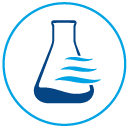
A Detailed Guide to Monitoring Air Pollution at Construction Sites
Introduction to Air Quality Monitoring
Air quality monitoring is the process of gathering continuous data on the particles, gasses and chemicals present in your air. The goal of collecting this data is to identify trends, spot problem areas and make adjustments accordingly. Building owners, facility managers and technicians may introduce monitoring to reduce airborne disease risk, identify areas that inhibit occupant well being and detect anomalies like mold growth. Additionally, construction site air quality is another vitally important area of concern for air quality monitoring.
Continuous air quality monitoring is a process by which IAQ data is gathered 24 hours a day, 7 days a week. This method uses IAQ sensors that collect data with minute-by-minute readings to detect air quality.
Air quality testing differs greatly from constant monitoring. Air quality testing occurs when a professional comes one time or once every prescribed time period (quarterly, biannually, annually) and uses a handheld probe to take a snapshot of what your air quality is at a single point in time. Construction sites are in need of the constant air quality monitoring that will alert managers to air quality issues so that workers and the public can be protected and cleanup efforts can be quickly implemented. This makes placing a sensitive air pollution monitor at construction sites necessary.
Why Monitoring Construction Site Air Quality is Necessary
Construction activities contribute greatly to overall dust pollution. Not only are raw materials like sand, cement, concrete, etc., used in construction activities, but, additionally, land excavation and drilling create vast amounts of air pollutants. Excavation machinery, transportation of raw materials, loading and dumping of sand, trash, gravel, cement and dirt, mixing of concrete and mortar, cutting and filling and large equipment movement, all add their fair share of particulate matter to the air. And perhaps most concerning is the possibility of unearthing toxic materials, breaking gas or sewer pipes or exposing dangerous elements or compounds while digging, blasting or drilling. If construction sites are left unregulated these particulate creating activities will vastly increase, and will negatively affect the health of laborers at these sites and local populations.
Sources of Air Pollution at Construction Sites
Construction activities not only create a lot of dust and particulate pollution (cement/concrete, gravel, wood, sand and metallic particles) but they also can expose underlying gasses, chemicals, pollutants or substances that are hazardous, poisonous or flammable.
When testing for airborne dust and particles, their size measurements can range from 1 micrometer (PM1) to 100 micrometers (PM2.5, PM10, PM100). It is important to identify as many particulates at all of these sizes. Some of the construction activities that generate the most dust and particulates and pose the risk of exposing other hazardous materials include:
Excavation
Large amounts of particulate matter (PM) are created through excavation activities such as digging, blasting and drilling that are used to prepare a building site and sink supports deep into the earth. Not only do they create and stir up a lot of dust and dirt but they also can unearth and spread potentially dangerous materials. Additionally these particles often remain in the air for a long enough time that winds can easily spread them to neighboring areas.
Dumping
In the process of loading and dumping truckloads of sand, cement, gravel, dirt and often trash from demolition, dust is created and spread widely. This particulate matter (PM) in the air can lead to breathing problems for workers as well as for people living and working in the vicinity.
Preparing Building Materials
Cutting and shaping wood, tile, stone, drywall and other materials and sieving sand and cement creates large amounts of fine PM in the air. In close quarters these particulates get breathed in and create respiratory problems for workers. Even light breezes will carry these particulates into nearby neighborhoods and create similar issues for the public.
Waste from Demolition & Construction
Collecting, moving, loading and unloading demolition materials and extra construction materials is also a concern for construction sites, because of the PM created from these materials. Keeping them to a minimum is incredibly important for the health of workers and the public.
Road Construction
A growing number of regulations involving Construction Dust Emission (CDE) have limited the emission of many particulates that can create health risks for workers on the sites and for people living and working next to construction sites.
The World Health Organization (WHO), has issued health warnings about breathing in particulate matter (PM) because these particles can get deep into lung passages and even find their way into the bloodstream. If dangerous PM enters the body it can cause respiratory, cardiovascular and cerebrovascular problems.
Additionally, when construction sites create large amounts of airborne dust, these dust clouds can limit visibility. When the visibility on roads and at intersections becomes limited by dust clouds, traffic accidents are more common.
For these and other reasons the Occupational Safety and Health Association (OSHA) has set clear parameters around the PM that workers can be exposed to on construction sites. These regulations of air quality in construction must be followed closely at all construction sites. This is how air pollution monitors help construction companies meet standards on their sites. Not only do these air pollution monitors detect air quality and analyze PM concentrations, they also identify trends during the workday and help to project the best ways to minimize overall PM at their construction. Thus they enable construction sites to meet all regulatory requirements.
Conclusion
Analysis of construction site air quality has undergone rapid evolution, spurred on by growing environmental public awareness and increasing regulatory accountability for meeting air quality standards. Torrent Laboratory has made a significant commitment to air testing, analysis and monitoring by investing in new methods, technologies and advanced procedures. We have the most technically advanced air quality testing laboratory equipment in order to provide highly accurate, fast and reliable results.
Torrent Laboratories air quality monitoring uses the most advanced technologies and testing methods such as NIOSH, OSHA, ASTM and EPA Air Compendium Methods (TO,CO, IO), to provide superior results for our clients. Our highly qualified and experienced scientists use the most up-to-date methods to identify particulate matter (PM) concentrations, volatile and semivolatile organic compounds, metals, pesticides or dioxins in your environment and provide swift analytical results.
Torrent Laboratories experts will assist you in ensuring that your air quality in construction needs are met or exceeded in all necessary regulations. We will also tailor our services and reports to meet your specific needs.






